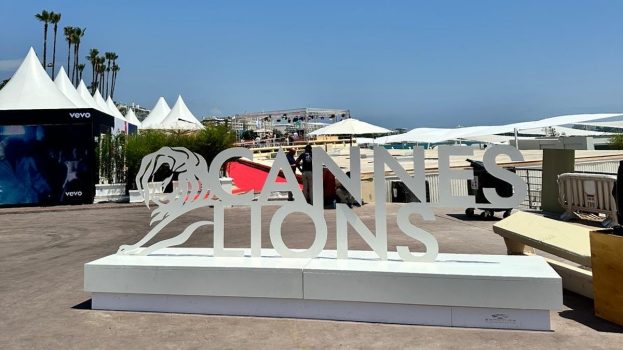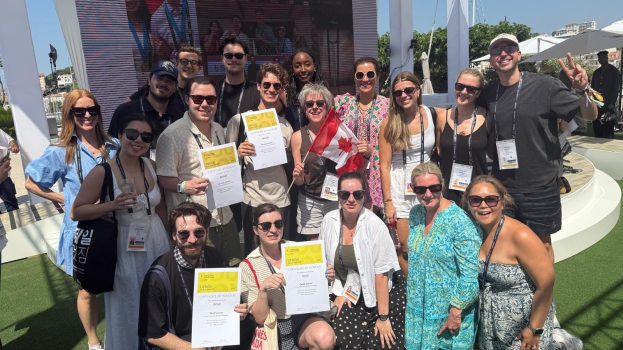Ever wonder what consumers really think of your commercials? And more importantly, whether they get the message? Reality Check tests advertising creative against a random sample of 300 consumers to determine, among other things, whether they liked the spot, whether they could identify the sponsor, whether they understood the message, and whether, after seeing the commercial, they’d be more likely to buy the brand advertised. The survey is carried out by Impact Research on a spot of Strategy’s choice. Kathleen Deslauriers, Impact’s general manager in Toronto, provides the analysis.
Advertiser: Clarica
Commercial: ‘Falling piano’
Tagline: ‘There’s a lot to be said for clarity’
Description: At the start of the commercial, we see a woman with an open umbrella sitting on a bench located on a very busy street. At a bus stop on the other side of the street, a man is calling out to her over the noise of the traffic while waving his arms wildly and pointing upwards. He is trying to tell the woman with the umbrella to move away.
A young woman at the same bus stop is observing the man’s crazy gestures and, looking upwards, now understands why he is in such a panic. From her portfolio, she takes a big pad, draws an upward arrow and then holds it up for the woman with the umbrella to see. The woman sees the arrow, looks up and, as she hurriedly runs away, a piano falls on the bench where she was seated only moments before. The commercial ends with a word, which then transforms into the name of the company sponsoring the commercial.
How the test commercial fared:
The Clarica commercial was very successful in terms of reach, with 55% of the sample recalling the execution as described. Had the creative been supported by 1,000 GRPs at the time of testing, reach should be have been only 40%, according to our norms. Even at 1,500 GRPs, the spot still surpassed the norm by 10 points. The unusual scenario in general and the surprise created by the falling piano obviously attracted the public’s attention.
Our unaided advertising awareness question showed just how intrusive the commercial was, likely as a result of the synergy created by the other creative elements of this multimedia campaign. Clarica obtained 8% of responses, which is second only to CIBC at 14% and ahead of Investors Group (6%), Royal Bank (5%) and Standard Life (4%).
The unusual storyline and the commercial’s entertainment value also contributed to the success of the creative. Indeed, 89% of those reached by the spot either liked it very much or somewhat, which is much stronger than our 74% standard.
As far as top-of-mind brand awareness is concerned, Clarica achieved 2%, which compares favourably to such long-standing names in investment and insurance, as TD Bank and Royal Bank (both at 6%), CIBC and London Life (both at 5%), as well as Manulife and State Farm (both at 3%). As the results indicate, the investment and insurance category is perceived to be highly fragmented.
Although aided brand awareness for Clarica came in at 51%, brand linkage was low at 18% if compared to the 35% score expected at 1,000 GRPs. However, given the newness of the Clarica name and the short time the campaign has had to hit its creative stride, we feel that the brand linkage score obtained is satisfactory.
With a score of 20% on the ‘astute’ message comprehension measure, the execution falls well below the 45-50% rule of thumb. However, as was the case with the media plan, the reader must keep in mind that we have not been made aware of the execution’s specific communications objectives. While we could have been strict in judging what messages are ‘astute’, the findings indicate that ‘clarity’ did not come through as strongly as desired. Nevertheless, the brand is still new and it will take time for this core value to imprint on the public’s consciousness.
Most likely the consequence of the weak brand linkage and message comprehension, the 9% top-box score for brand consideration appears low at first glance. Even though the question measured brand consideration (and not purchase intent), the campaign has probably not yet had enough time to strongly infiltrate the consumer’s decision-making process.
Methodology:
From Nov. 2-9, 1999, 300 Toronto CMA residents were interviewed over the telephone about ‘Falling piano.’ Within the sample, we had an even split according to sex and, within each gender group, equal representation of the two age brackets: 18-34 years and 35-64 years. The maximum margin of error is +5.6% at a 95% level of confidence.
After measuring unaided brand and advertising awareness, we prompted recall by describing the visuals.
If the consumer recalled seeing ‘Falling piano’ as described, we consider him or her ‘reached’ and we then continue the interview to assess other variables such as sponsor identification, message comprehension, appreciation, and so on.
To accurately gauge brand linkage, we did not include the name of the sponsor or the product in the commercial’s description. As well, we did not reveal any message cues or the tagline. This allowed us to assess message comprehension after exposure to the execution in a manner that approximates ‘real life’.


























